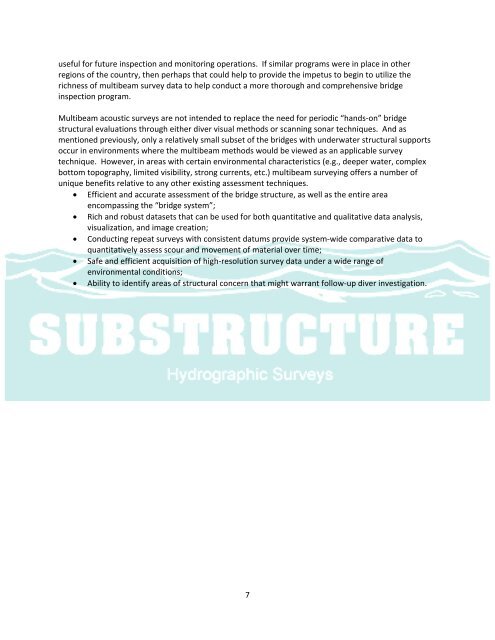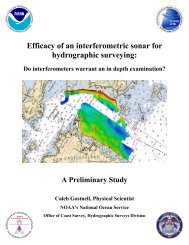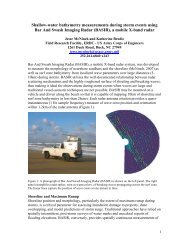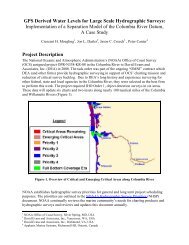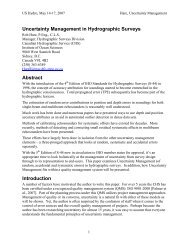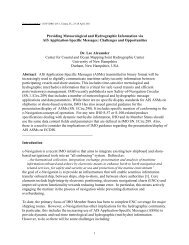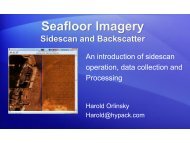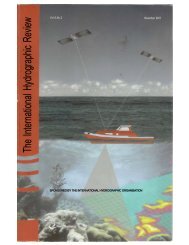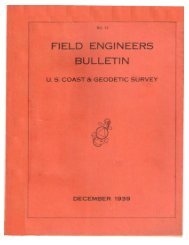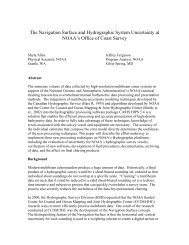High-Resolution Acoustic Multibeam Surveys for Bridge Assessment
High-Resolution Acoustic Multibeam Surveys for Bridge Assessment
High-Resolution Acoustic Multibeam Surveys for Bridge Assessment
Create successful ePaper yourself
Turn your PDF publications into a flip-book with our unique Google optimized e-Paper software.
useful <strong>for</strong> future inspection and monitoring operations. If similar programs were in place in otherregions of the country, then perhaps that could help to provide the impetus to begin to utilize therichness of multibeam survey data to help conduct a more thorough and comprehensive bridgeinspection program.<strong>Multibeam</strong> acoustic surveys are not intended to replace the need <strong>for</strong> periodic “hands‐on” bridgestructural evaluations through either diver visual methods or scanning sonar techniques. And asmentioned previously, only a relatively small subset of the bridges with underwater structural supportsoccur in environments where the multibeam methods would be viewed as an applicable surveytechnique. However, in areas with certain environmental characteristics (e.g., deeper water, complexbottom topography, limited visibility, strong currents, etc.) multibeam surveying offers a number ofunique benefits relative to any other existing assessment techniques. Efficient and accurate assessment of the bridge structure, as well as the entire areaencompassing the “bridge system”; Rich and robust datasets that can be used <strong>for</strong> both quantitative and qualitative data analysis,visualization, and image creation; Conducting repeat surveys with consistent datums provide system‐wide comparative data toquantitatively assess scour and movement of material over time; Safe and efficient acquisition of high‐resolution survey data under a wide range ofenvironmental conditions; Ability to identify areas of structural concern that might warrant follow‐up diver investigation.7


